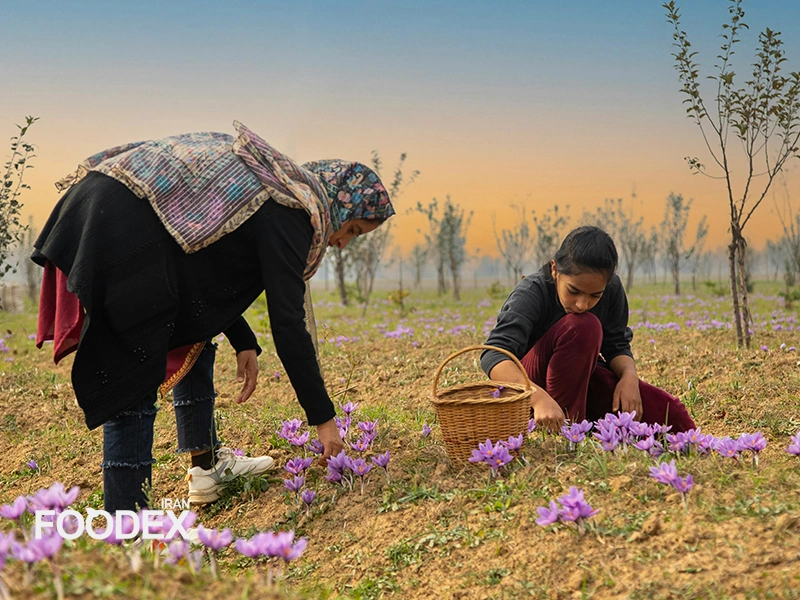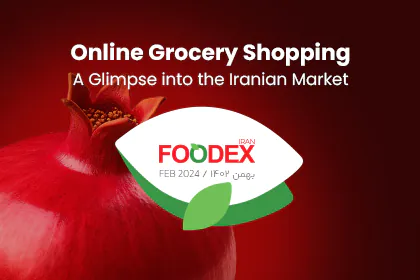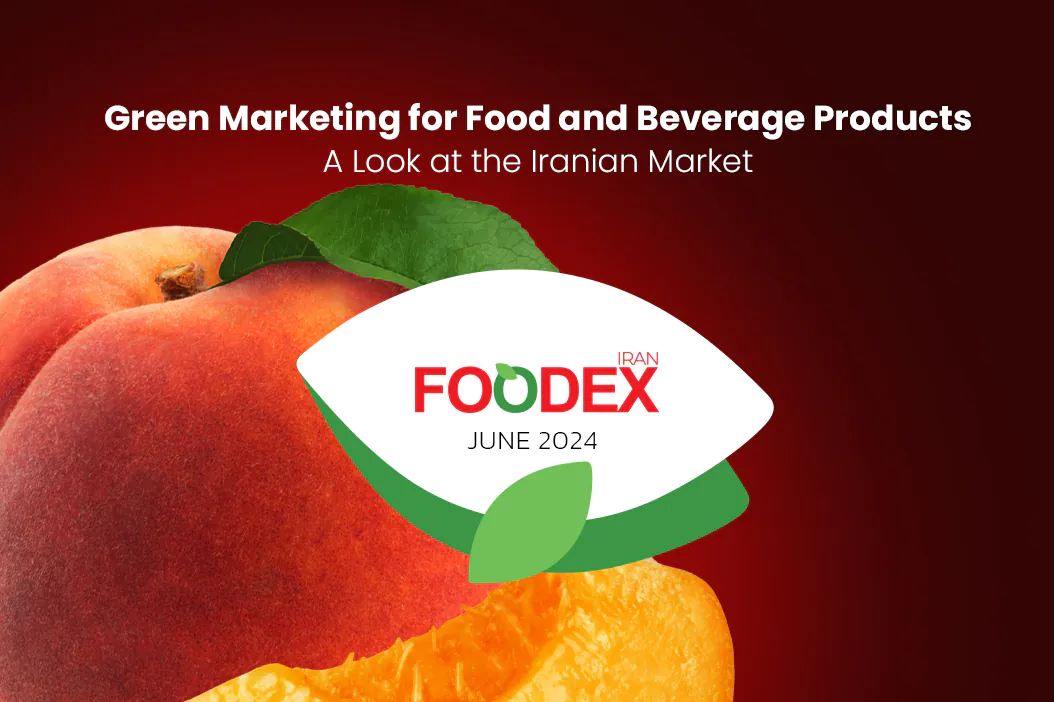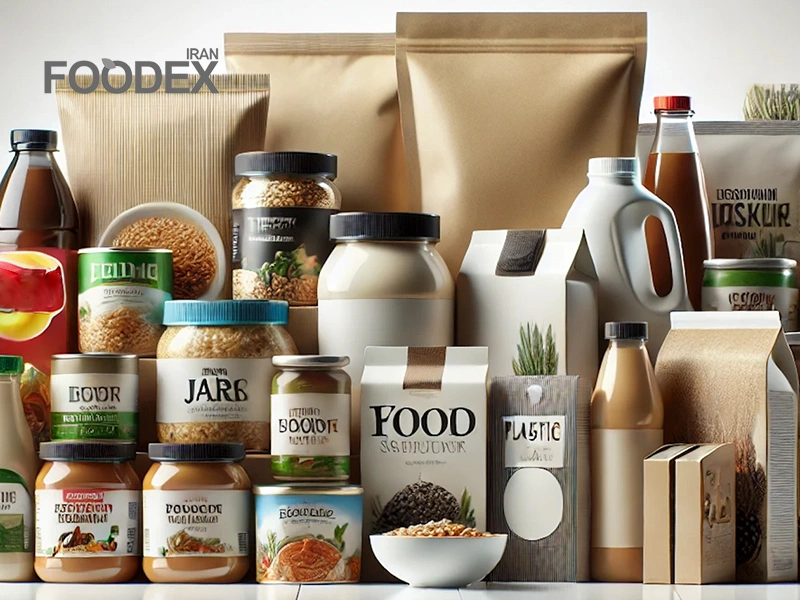For 3,500 years, saffron, the world’s most expensive spice, has been highly valued in food, culture, and trade. Saffron comes with a distinctive flavor and red color. It is much more than just a spice for cooking. It is essential in traditional medicine, cosmetics, and even in cultural rites. In this succeeding paper by Foodex, let us learn about this highly valued spice and reveal what makes it special.
What is Saffron?
The Plant Behind the Spice
Saffron is derived from the dried stigmas of the Crocus Sativus flower. It is a herbaceous perennial belonging the Iridaceae family. Following is a little more information on this plant:
Height of the Plant: 10 to 30 centimeters
Leaves: Narrow and dark green
Flowers: Violet-colored with three red stigmas
A corm is a bulb-like underground storage organ. It lasts year after year.

Unique Chemical Composition
Saffron derives its magic from some very unique chemical composition
Crocin: Responsible for saffron’s golden-yellow color and strong antioxidant properties.
Picrocrocin: Gives saffron its characteristic slightly bitter flavor.
Safranal: The main compound responsible for saffron’s signature aroma.
Types of Saffron
Saffron is categorized based on how it’s harvested and processed
Sargol (All Red)
Pure red stigmas, highest quality, used for luxury markets and exports.
Negin
Longer stigmas, visually appealing, great for gifting or high-end packaging.
Pushal
Red stigmas with a bit of yellow style attached, used daily in cooking.
Bunch (Dasteh)
Stigmas and styles tied in bundles, are usually used in traditional recipes.
The biggest Persian Saffron Brands
Visit Food Industry Fair
History of Saffron
Ancient Origins
Origin
Iran: Over 3,500 years of saffron cultivation, specifically in Greater Khorasan.
Early Usage
Egypt: To perform embalming and as fragrance.
Greece and Rome: In religious rituals and as medication.
Medieval Trade and Modern Spread
Global Trade
Saffron moved down the Silk Road, through China and India, to Europe. It became a luxury trade product.
European Demand
In the 14th century, there was a severe shortage of saffron in Europe, that it even led the “Saffron War.”
Present Production
Iran is the leading producer of saffron. Spain and India also grow it.
3PL Logistic’s Role in Developing the Global Food Supply Chain
Learn More
Cultivation and Harvesting Saffron
Climatic Requirements
Weather
Saffron requires dry, temperate climates with extremely hot summers and cold winters.
Soil
Prefers sandy loam with good drainage, pH between 6 and 8.
Planting Saffron Process
Time to Plant
Best time for planting is between July and September depending on the region.
Prepare the Soil
Plowing deep with organic manure.
Choose the Right Corms
The larger corms (over 8g) give better yields.
Planting
Setting the corms 15-20 cm deep equally apart.
Caring for the Crop
Irrigation
Saffron needs a few key irrigations during its growth cycle. This is especially true right after planting in October.
Weeding
Weeding is done manually, with one alstaking much care in the use of herbicides.
Harvesting
Pick Flowers
Early morning before sun-up, this would help in capturing most of the aroma.
Separate Stigmas
The red-colored stigmas are separated by hand or with specially designed tools.
Drying
Traditionally shaded or dried in low-temperature dryers.
Health Benefits and Culinary Uses
Health Benefits
Rich Antioxidant
It fights free radicals. So, it may lower the risk of heart disease and cancer.
Elevates Mood
Saffron can be said to alleviate symptoms of depression.
Improves Memory
Its bioactive principles may avoid Alzheimer’s.
Cardiovascular Health
It is known for lowering blood pressure and LDL cholesterol.
Immune System
It enhances the proliferation of immune cells that help attack an infection.
Culinary Uses
Dishes with Rice
Saffron rice is so common in use in so many cultures.
Stews and Curries
Broths and curries are often flavored for depth and wealth by this spice.
Sweets
It gives flavor to sweets such as saffron cakes and puddings.
Beverages
It is used in teas, liqueurs, and even saffron-flavored syrups.
International Cuisine
From Spanish paella tIndian biryani, saffron is essential in various regional dishes.
Food Export: How to Get Prepared and Enter Global Markets
Learn More
How Does Saffron Compare to Other Spices?
Saffron vs. Turmeric
Similarities: Both add vibrant color to dishes.
Differences: Saffron is much more expensive. It has a sweeter, more complex flavor. Turmeric has an earthy taste.
Saffron vs. Vanilla
Similarities: Both are expensive spices used in desserts.
Differences: Saffron has a warm, somewhat bitter flavor. Vanilla is sweet and creamy.
Saffron vs. Cardamom
Similarities: Both are widely used in Middle Eastern and Indian cooking.
Differences: Cardamom is spicier and more aromatic. Saffron is milder yet more floral.
Saffron Substitutes
Turmeric
Very yellow in color, with a bitter taste but not aromatic like saffron.
Safflower
This gives a yellowish color, but it has a very mild flavor.
Annatto
A decent color substitute with a mild peppery flavor; it is used in Latin American cooking.
Paprika
Adds red color and may be sweet or spicy depending on type.
Storage and Packaging of Saffron
Best Saffron Packaging
Lightproof Containers: To protect from light.
Tight Seals: Prevent oxygen entry and maintain aroma.
Moisture-Tight: Employ packaging that prevents moisture entry.
Storage Tips
Store saffron in a cool, dry place away from sunlight.
Use small containers to reduce the possibility of exposure tair.

Saffron Market Size
Global Saffron Value: Now estimated tile between 500 t$700 million.
Production: About 300-400 tons per year.
Key Saffron Producers
Iran: It is the largest producer of saffron, accounting for more than 90% of the world’s supply.
India: Mainly the Kashmir region.
Spain: Its high-quality saffron is well-known and comes from La Mancha.
Top Saffron Exporters and Importers
Export Leaders: Iran, Spain, Afghanistan.
Top Importers: Spain, UAE, the U.S., China.
Saffron Market Trends
Rising demand due to growing awareness about health benefits linked with saffron.
New product developments regarding cosmetics, supplements, and beverages.
Buying Tips for Authentic Saffron
Look for gradual color release: Real saffron releases color slowly in water.
Check the aroma: It should smell sweet and a little bitter.
Check the threads: Thin, curled, red threads with a slight trumpet shape on the head.
ISO 3632 Standard: The Global Reference for Saffron Quality
ISO 3632 is an international standard developed by the International Organization for Standardization (ISO) that specifically addresses the quality specifications for saffron. This standard provides guidelines and criteria to evaluate and ensure the quality of saffron, a valuable and sensitive product in global markets.
Key Aspects of ISO 3632
Defining Saffron Quality
Ensuring purity and freedom from adulteration.
Verifying that the saffron is pure and free from artificial dyes or other impurities.
Testing Methods
Measuring picrocrocin (responsible for the flavor of saffron)
Measuring safranal (responsible for the aroma of saffron)
Measuring crocin (responsible for the color of saffron)
Grading of Saffron
Saffron is classified into different grades based on its color strength, flavor, and aroma.
Higher-quality saffron meeting stringent purity and quality criteria receives higher grades.
Physical and Chemical Properties
Moisture content.
Presence of foreign matter such as dust, other plant strands, or unauthorized particles.
Applications of the Standard
Saffron producers use ISO 3632 to guarantee the quality of their products.
Importers and exporters rely on these criteria to ensure compliance with international standards.
Consumers and buyers can assess saffron quality using the ISO 3632 standard.
If you are involved in the saffron trade, familiarity with ISO 3632 is crucial, as it serves as a global reference for evaluating saffron quality.
Conclusion
Saffron, or red gold, is a sought-after spice. It has been in high demand for centuries, in and out of kitchens. Its rich history, health benefits, and complex flavor are a boon the food and beverage sector. Quality is key for cooking, cosmetics, or health supplements. It ensures you get the most from this amazing spice.
FAQ
Why is saffron the most expensive spice in the world?
Saffron is costly due to its labor-intensive harvesting process. About 150,000 flowers are needed for just one kilogram of dried saffron, and each flower is hand-picked. This, combined with its unique aroma, taste, and medicinal properties, makes it highly valuable.
What are the key medicinal properties of saffron?
Saffron has antioxidant properties, improves mood, boosts memory, and supports heart health. Compounds like crocin and safranal help reduce oxidative stress and enhance neurological function.
What are the differences between saffron and turmeric?
Color: Saffron produces a golden-red hue, while turmeric is bright yellow.
Flavor: Saffron is sweet and slightly bitter, while turmeric has an earthy, bitter taste.
Price: Saffron is much more expensive due to its complex harvesting process.
Which countries are the top producers and consumers of saffron?
Producers: Iran leads with over 90% of global production, followed by India and Spain.
Consumers: Spain, UAE, China, and European countries are the main consumers.
How can you identify pure saffron?
Gradual Color Release: Pure saffron releases color slowly in hot water.
Aroma: It has a strong, sweet, and slightly bitter aroma.
Appearance: Thin, curled threads with a trumpet-shaped end.
Certifications: Look for international standards like IS3632.
Sources
FAO(Food and Agriculture Organization of the United Nations)
FAOSTAT Database provides data on global production and trade of saffron.
Website: http://www.fao.org/faostat/
IS3632 Standard for Saffron
This international standard outlines the specifications for saffron quality, purity, and classification.
Organization: International Organization for Standardization (ISO)
Negbi, M. (2003)
Saffron: Crocus sativus L.
A comprehensive book on saffron’s biology, history, and production.
Publisher: Harwood Academic Publishers
Melnyk, J. P., Wang, S., & Marcone, M. F. (2010)
Chemical and biological properties of the world’s most expensive spice: Saffron.
Provides a scientific analysis of saffron’s unique properties and its uses.
Journal: Food Research International, 43(8), 1981-1989.
World Trade Organization (WTO)
Offers trade data and reports on saffron’s role in international commerce.
Website: https://www.wto.org
Iranian Ministry of Agriculture
Annual reports on saffron production and export, focusing on Iran’s dominant role in the global market.
Website: https://maj.ir
Phytotherapy Research Journal
Various research articles on the medicinal benefits of saffron, including its potential in treating depression and memory loss.
Journal: Phytotherapy Research
World Health Organization (WHO)
Guidelines on the safe use of medicinal plants, including saffron, in traditional and modern medicine.
Website: https://www.who.int
Ehsan Allahverdi
Executive Manager of Foodex Iran
Marketing Consultant for Leading Food & Beverage Brands
website | linkedin























